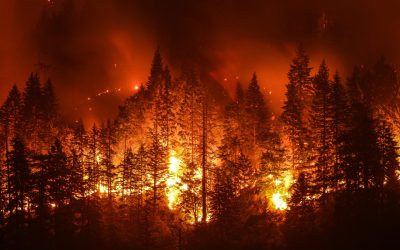Research shows that 3.6 billion people live in areas highly susceptible to climate change (World Health Organization). Building a Climate Ready Nation isn’t just about reacting to the impacts of climate change – it’s about anticipating them and taking proactive steps to ensure a thriving future. As IBSS works alongside the National Oceanic and Atmospheric Administration (NOAA) and other key partners, we’re committed to helping the nation prepare for the challenges ahead.
What Does it Mean to Be Climate Ready?
The last 10 years have been the hottest on record (NASA). Climate change poses a significant threat to our planet and all who inhabit it. We are experiencing more extreme weather events, such as intense heatwaves, hurricanes, and wildfires, which not only endanger lives but also devastate ecosystems. Melting polar ice and rising sea levels threaten coastal communities, while shifts in weather patterns disrupt agriculture, leading to food insecurity.
Additionally, climate change exacerbates issues like water scarcity, health problems, and economic instability, disproportionately affecting the most vulnerable populations (National Library of Medicine). The long-term consequences could be irreversible, making it crucial for us to take immediate and decisive action to mitigate its effects.
A Climate Ready Nation understands the risks posed by climate change and takes decisive action to address them. The work to become a Climate Ready Nation enhances resilience, reduces vulnerabilities, and ensures communities, businesses, and ecosystems continue to thrive in changing conditions.
Here are the key ingredients that make up a Climate Ready Nation:
- Adaptation and Resilience: Building resilience starts with robust infrastructure that can withstand extreme weather and rising sea levels. It also means creating policies and practices that help communities adapt to changing conditions.
- Mitigation Strategies: Reducing our carbon footprint through renewable energy, energy efficiency, and sustainable practices is essential to slowing the progression of climate change.
- Public Awareness and Education: Knowledge empowers people to take action. Educating the public on climate risks and solutions is a vital part of building a prepared and resilient nation.
- Disaster Preparedness: Strong emergency response systems and community preparedness plans ensure we’re ready to respond to and recover from climate-related disasters.
- Policy Integration: Climate readiness requires a holistic approach, embedding climate considerations into all aspects of policymaking, from urban planning to healthcare.
Becoming Climate Ready by 2030
NOAA is working hard so that the United States becomes a Climate Ready Nation by 2030. Through its extensive data, tools, and services, NOAA enables businesses, federal agencies, emergency managers, and vulnerable communities to make informed decisions and take decisive action against climate threats. They have created a five-step strategy agencies can use to help them achieve their mission.
- Service Delivery and Decision Support Tools: NOAA is enhancing the accessibility and relevance of its decision support tools to better serve the needs of partners. By improving weather, water, and climate data delivery, NOAA ensures that decision-makers have the tailored information they need to reduce risks and respond effectively.
- Modeling, Prediction, and Projection: Leveraging state-of-the-science modeling and prediction capabilities, NOAA provides communities and businesses with accurate weather forecasts and climate projections. This helps prepare for high-impact events like hurricanes, floods, and extreme temperatures.
- Research and Development: With over 6,000 scientists and engineers, NOAA is at the forefront of cutting-edge research to address climate and weather challenges. By integrating Earth systems science with social sciences, NOAA’s research enhances climate adaptation strategies and resilience scenarios.
- Data and Information Stewardship: NOAA’s world-class data stewardship ensures that climate-related data is accessible, transparent, and reliable. This commitment to data integrity builds public trust and supports informed decision making.
- Observational Infrastructure: From the ocean floor to orbiting satellites, NOAA’s observational infrastructure continuously monitors our planet. The agency is investing in next-generation technologies to improve data collection and dissemination, enabling more comprehensive and accurate climate observations.
IBSS’ Commitment to a Climate Ready Nation
At IBSS, we’re proud to collaborate with NOAA on contracts that contribute to building a Climate Ready Nation. Our work involves raising awareness through social media and blog posts, supporting the development of decision-support tools, enhancing public communication on climate issues, and more!
Building a Climate Ready Nation requires collaboration, innovation, and action. By working together, we’re making strides toward a future where our communities are not just surviving, but thriving in the face of climate change. As we look to 2030 and beyond, IBSS is committed to playing our part in ensuring a resilient and prosperous future for all.





